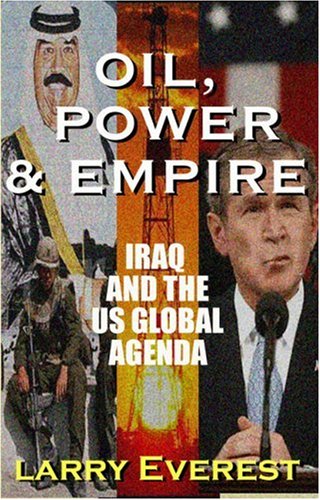A Lesson from History: Operation Desert Fox, Iraq, 1998
by Larry Everest | September 23, 2013 | Revolution Newspaper | revcom.us
Anyone who thinks U.S.-led “arms inspections” or “disarmament” represents a step in the right direction or is anything other than another form of imperialist intervention and bullying needs to study and think about the lessons of Operation Desert Fox.
On December 16, 1998, then-President Bill Clinton went on TV to address the nation. He stated, “I ordered America’s armed forces to strike military and security targets in Iraq. They are joined by British forces. Their mission is to attack Iraq’s nuclear, chemical and biological weapons programs and its military capacity to threaten its neighbors. Their purpose is to protect the national interest of the United States, and indeed the interests of people throughout the Middle East and around the world. Saddam Hussein must not be allowed to threaten his neighbors or the world with nuclear arms, poison gas or biological weapons.”
Clinton claimed that he had been forced to take this step because “Saddam Hussein announced that he would no longer cooperate with the United Nations weapons inspectors” who had been overseeing “the elimination of Iraq’s capability to retain, create and use weapons of mass destruction.” Clinton charged that Iraq had refused to “comply” with UN resolutions and quoted inspectors that “Iraq’s conduct ensured that no progress was able to be made in the fields of disarmament.”
That night, the U.S. and Britain launched a four-day cruise missile and bombing campaign against Iraqi targets code-named Operation Desert Fox. They did so without Security Council authorization and, for over 100 hours, lashed Iraq with 415 cruise missiles and 600 laser-guided bombs.
Clinton did not tell people:
- That, in fact, Iraq had overwhelmingly cooperated with UN inspectors. Within six months of the end of the 1991 Gulf War, Iraqi weapons programs were being discovered and destroyed. Iraq may have destroyed all its weapons of mass destruction by the early 1990s, according to a high-level defector, and certainly by the late 1990s. In October 1998, the International Atomic Energy Agency certified that Iraq had provided it with a “full, final, and complete” account of its nuclear weapons programs, and that the agency had found no evidence of any prohibited nuclear activities since October 1997. A year later, the UN Security Council’s disarmament panel concluded, “Although important elements still have to be resolved, the bulk of Iraq’s proscribed weapons programmes has been eliminated.”
- That members of the United Nations Special Commission (UNSCOM) charged with carrying out weapons inspections (37 percent of whom were U.S. personnel) also spied on Iraq—including planting covert, high-tech listening devices to monitor Iraqi government and military communications, including Saddam Hussein’s movements.
- That Richard Butler, the head of UNSCOM in 1997-98, talked with President Bill Clinton’s National Security Advisor Sandy Berger on a daily basis. Butler even cleared his reports with the U.S. UNSCOM inspectors when they conducted surprise inspections (violating protocols worked out with Iraq) aimed at provoking confrontations, which were then seized upon by the U.S. to claim Iraq was not complying with inspections.
- That while Butler’s mid-December report to the Security Council charged that weapons inspectors had made “no progress” during the previous month, the body of the report could cite only five incidents—out of 300 inspections—when there had been any controversy.
- That U.S. objectives were not simply disarming Iraq, but weakening it as a regional power and overthrowing Saddam Hussein as part of maintaining U.S. regional dominance.
- That the U.S. was illegally “concentrating” on assassinating Saddam Hussein: Desert Fox’s targets included homes where the Iraqi president was thought to spend time with mistresses. According to the New York Times, some of the targets were “selected from data gleaned by the American-led espionage” operations utilizing arms inspections.
- That, according to former UN Weapons Inspector Scott Ritter, “when the Americans bombed, they went after more than a hundred targets that had nothing to do with weapons of mass destruction or industrial manufacturing, and had everything to do with Saddam Hussein and his security. They attempted to remove Saddam Hussein through a bombing campaign that was empowered by the intelligence information gathered by the weapons inspectors.”
In short, Clinton deliberately lied about what the U.S. was doing and why to excuse, justify and cover up U.S. aggression and war crimes. His lies weren’t fundamentally different than Bush and Cheney’s in 2002-2003; they helped pave the way for the 2003 U.S. invasion of Iraq.
For an extensive discussion, see Larry Everest, Oil, Power & Empire: Iraq and the U.S. Global Agenda (Common Courage 2003), Chapter 7, “The Great WMD Flim Flam,” pp. 200-204.
If you like this article, subscribe, donate to and sustain Revolution newspaper.

